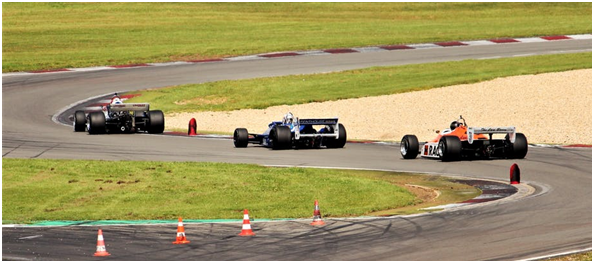<p style="text-align: justify;">Suspension in a Formula 1 car is the factor that ties all the elements of the car together. The tires grip the road surface and the downward force of the wings comes together in the suspension. The suspension in a race car is not about the comfort of the driver but solely about preserving equilibrium and maintaining speed.</p>
<p style="text-align: justify;">The springs and dampers need to be very firm to defuse the impact from hitting curbs and bumps quickly. There is a spring that absorbs impact and a shock absorber that returns the impact; together, they prevent the chock building up as a force, which would waste energy.</p>
<h3 style="text-align: justify;"><strong>The ban on computer-controlled suspension</strong></h3>
<p style="text-align: justify;">Before the 1990s, race cars could use computer-controlled active suspension, which helped the issue further. Since the ban on this technology in the 90s, all suspension for Formula 1 cars must be manually created and managed. F1 cars feature multi-link suspension in the front and rear of the vehicle to control the suspension perfectly, which is especially important during cornering.</p>
<p style="text-align: justify;">The lower suspension arm has a longer radius so that the bottom of the tire slants outwards, which maximizes the grip. This is essential for taking the tight corners on a racing circuit and helps to speed up the process and reduce the chance of rolling from the centrifugal force exerted on the car.</p>
<h3 style="text-align: justify;"><strong>Innovative car design</strong></h3>
<p style="text-align: justify;">The interesting car design can be best appreciated in the flesh, especially if the race-goer is able to look down from above using a high vantage point. When attending an F1 race, visitors can watch the action from a special enclosure to ensure they enjoy the best view and experience; for example, the F1 Paddock Club Hungary gives a great view above the pits, so you can see the cars close up in all their glory. It is easy to book this race experience through events companies such as https://edgeglobalevents.com/f1-paddock-club/hungary/.</p>
<p style="text-align: justify;"><img class="aligncenter wp-image-30622 size-full" src="https://haznos.org/wp-content/uploads/2018/05/sport1.png" alt="Why Is Suspension So Crucial In F1 Racing?" width="606" height="405" /></p>
<p style="text-align: justify;">The springs on Formula 1 cars are not mounted on the suspension arms; instead, they are operated remotely via the pushrods and bell cranks. They are made out of carbon fiber for increased strength and reduced weight. The suspension on these cars is adjustable to a tiny fraction, ensuring it can be minutely controlled depending on the weather conditions, requirements of the track, and driver preferences.</p>

Why Is Suspension So Crucial In F1 Racing?
